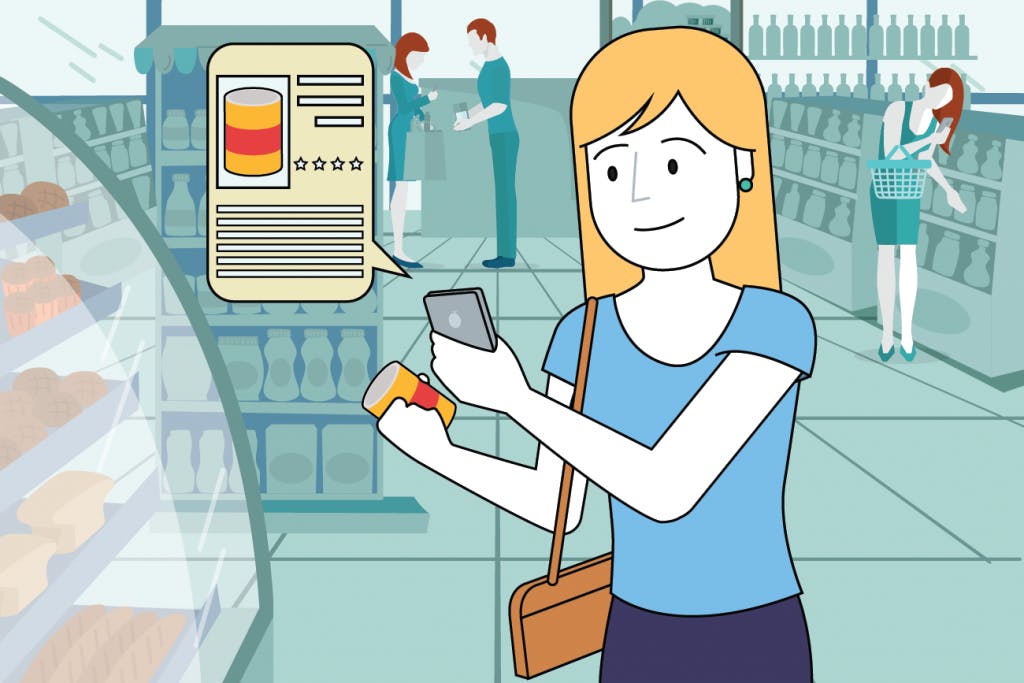It seems like just yesterday Baby Boomers were the hot topic in consumer packaged goods (CPG) and retail. And while they’re still a mighty generation, the conversation has shifted to focus on Millennials, with Gen Z following close behind. (Sorry, Gen X. Looks like we’re getting skipped over…again.)
Millennials have surpassed Boomers as the largest generation, and both Millennials and Gen Z have been raised with a shopping mentality that vastly differs from generations before them. In the simplest of terms, shopper breakdowns are as such:
Boomers want convenience, and they like to shop online, but the majority of them prefer the personal interactions they get from an in-store shopping experience.
Gen X tends to hold back in their shopping than other generations, and they’re wary of marketing and will research the heck out of a product before they buy it (in contrast to Boomers, who have the disposable income and lack of inclination to hunt down the best deal).
Not only are Millennials digital natives, they’re omnichannel natives—they turn to the web or mobile for the majority of their purchases, but they still want in-store as an option. What’s more, shopping is an event for Millennials, not just something else on their to do list, as Boomers often feel.
What is life without the Internet? Gen Z wouldn’t know. And as such, they may be the most discerning generation when it comes to getting deals, with their mad Internet research skills, but like Millennials they too see shopping as an experience
The possibility of four very distinct generations all shopping in the same store, means that retailers have got to redefine their approach to consumers. Baby Boomers shop one way, and the younger generations another. The challenge is that these generations exist simultaneously, and while retailers are well-versed in attracting Boomers, new strategies are needed to attract the younger generations.
But to do that, retailers have to first understand the new generations they’re courting.
To know them is to love them
Yes, says Neil Stern, senior partner at McMillan Doolittle, Millennials still like to shop at retail stores. But, he adds, “They are more channel agnostic—however it is most efficient to get their shopping done. That means they are shopping more stores and channels and are used to almost unlimited choice. They are huge sharers, so social media tools are critical.”
Technology is critical to connecting with Millennials, and retailers must have it in their toolkit to attract this generation. “Millennials have grown up in a world with technological convenience and personalization, and expect that when interacting with retail brands,” says Courtney Albert, director of Innovation and Marketing for the Parker Avery Group. Millennials, she adds, are looking for retailers that align with their lives and expectations, not the other way around.
Technology is also critical, perhaps even more so, to connecting with Gen Z. “This is the generation that does not remember a time without the Internet and a digital presence,” Albert notes. “Their lives are an open book, and because of this transparency, they expect the same from brands and retailers.” Like Millennials, Gen Z also has the expectation that they will interact with retail brands, just as they would with family or friends, via the same channels, Albert adds.
These digital natives, Stern notes, are increasingly mobile-driven. “They have grown up with, and live on, mobile devices,” he says.
Retailers respond
Knowing this information about these two generations, it’s up to retailers to make sure they’re meeting Millennials and Gen Z where they are. And investing in technology is the first step in that meeting.
“There has to be more interaction and crowdsourcing, giving them the opportunity to help shape the brand,” Albert says. A retailer’s strategy must go beyond leaving a review or sharing experiences, she says. It’s got to be about connecting and interacting with other customers without a middleman, or investing in services like buy online/pickup in store or subscription services. This, Albert says, “offers time-saving and easy transactions that fit into the lifestyles of these shoppers, especially Millennials.” In-store investments that create more open spaces, offer free wifi, and floor resets that provide a new experience on every visit appeal to Gen Z consumers who gravitate to in-store, Albert adds. “This might seem counterintuitive because of their substantial online presence, but retailers are winning them over with things like pop-up shops that feature influencers or one-of-a-kind experiences,” she says.
But what about those retailers who aren’t yet focusing on Millennials and Gen Z? Our experts have some words of wisdom for them in my next post. Stay tuned!
*Why yes, I do realize that the demographic I’m discussing may or may not get the play on the slogan I used to title this post.


